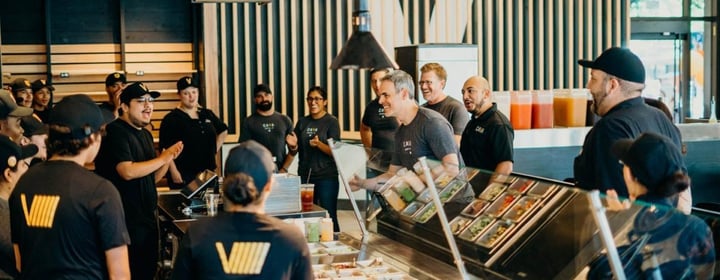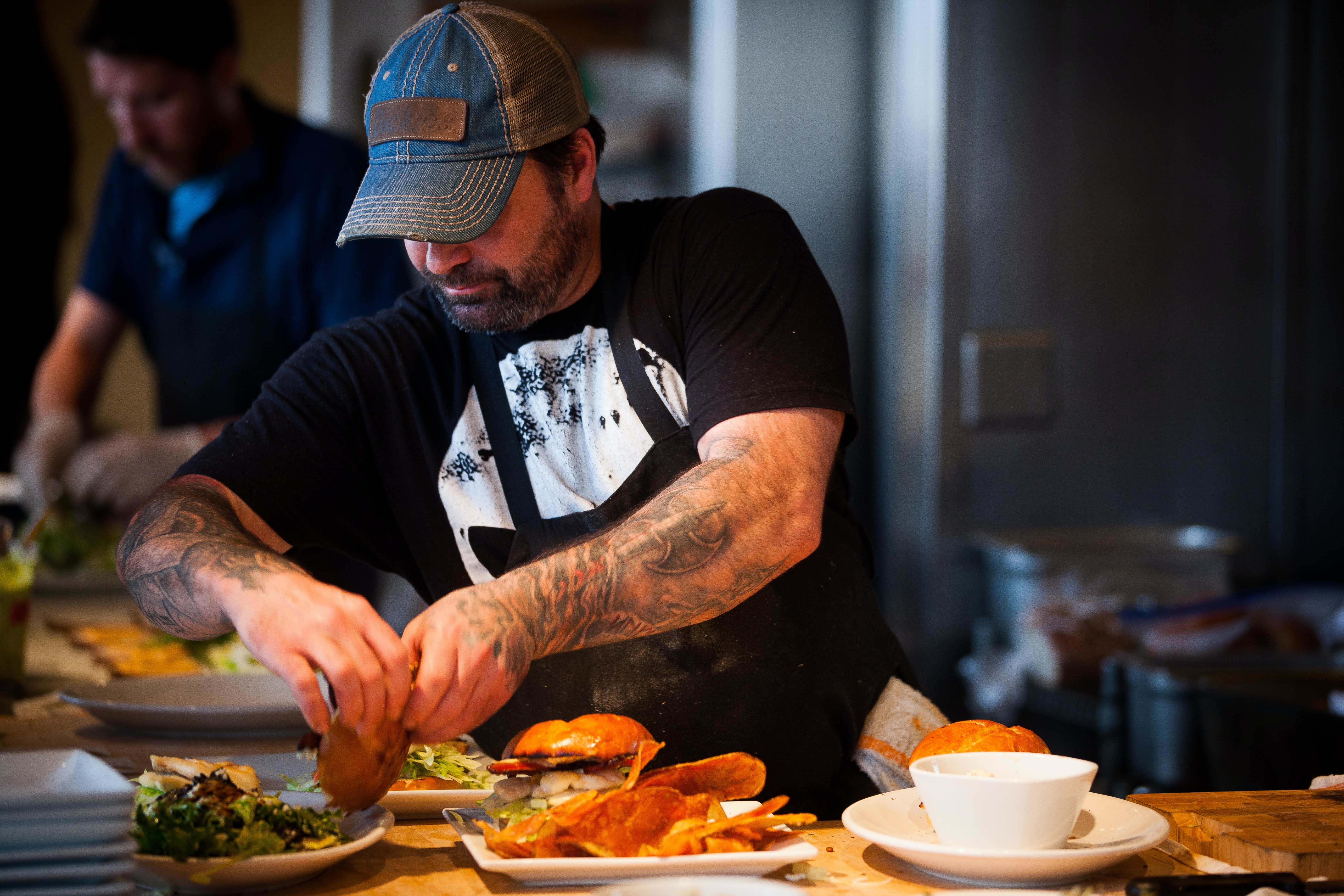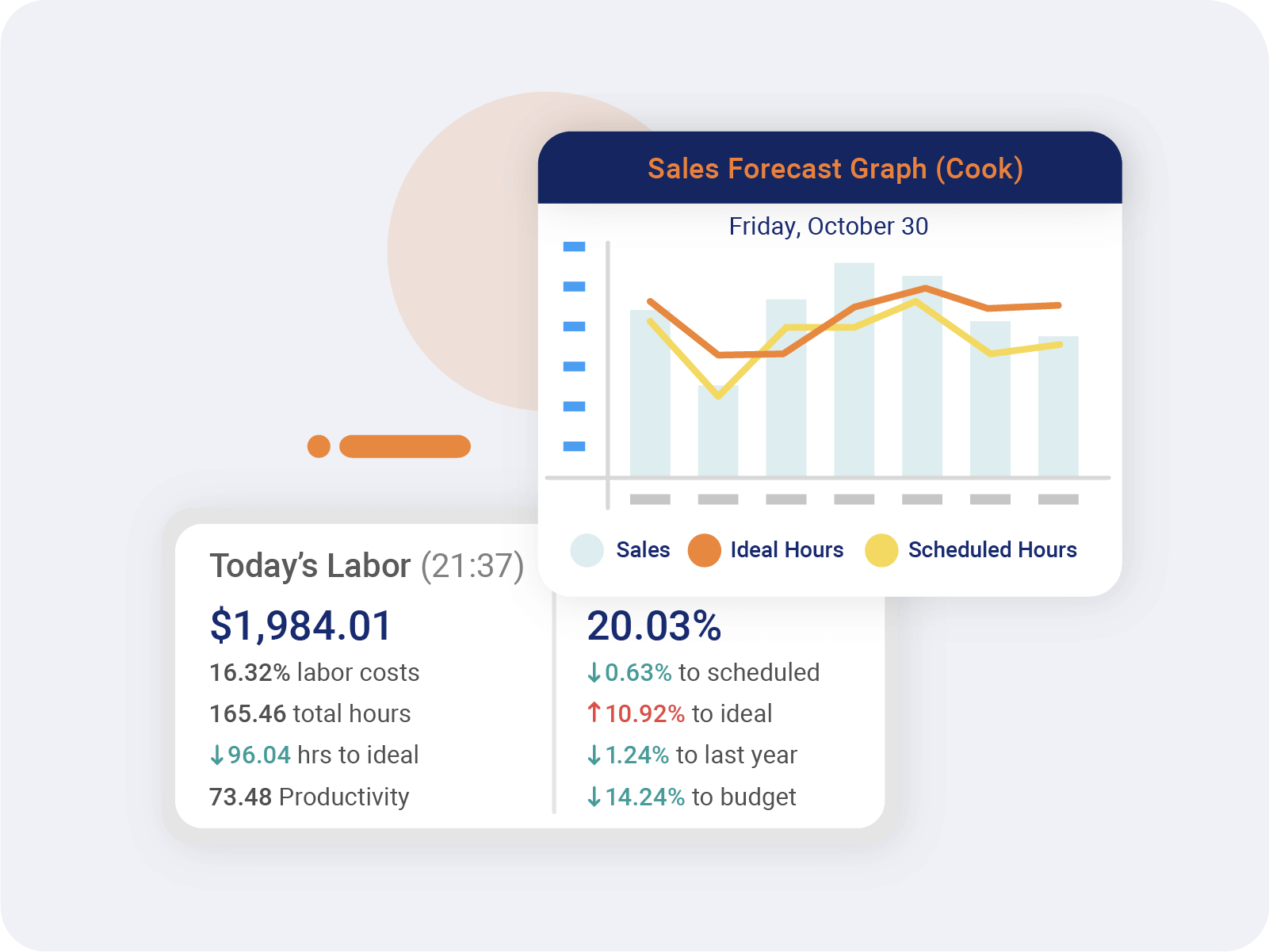
- Home
- Crunchtime Blog
- Four Quick Tips to Help Streamline Your Labor Operations

Four Quick Tips to Help Streamline Your Labor Operations
Here are 4 quick tips to help you run your labor operations more smoothly.
Staffing is among the top challenges restaurant operators are facing today. From rising labor costs to a limited talent pool, optimizing your restaurant’s labor operations can be daunting. A restaurant management system equipped with both labor and training capabilities can help. Here are some best practices to implement to improve your labor operations:
1. Optimize Your Schedules Using Data
Using data to inform scheduling is one of the most effective ways to cut labor costs and increase efficiency. By applying accurate sales forecasts based on historical data, you can plan for how much business you’ll do in any given shift. By knowing how many items you’re likely to sell and how many guests you’re likely to serve, you can staff your back and front of house more accurately. Restaurant management software can help track and consolidate your labor and sales data, helping to point out trends and areas for improvement.

2. Rank Your Team Members
You wouldn’t have your newest bartender work a Saturday night shift alone during the biggest game of the year, right? Ranking your team members helps you to schedule them based on their skill set and how they can complement – and even support – each other during a shift.
This ensures a balanced set of talents in the restaurant, which inevitably leads to better employee and guest experiences. Using restaurant management software with the capability to rank team members can help ensure that each shift is balanced and set up for success.
3. Auto-Schedule with an Employee Scheduling App
Once your team members are ranked, using a restaurant employee scheduling app can easily ensure the right staff are scheduled for the right shifts. For example, when a restaurant manager plans for the week ahead, they should take into consideration the sales forecast and their staff rankings to schedule their most experienced employees during the busiest shifts.
A restaurant employee scheduling app automates this process saving managers time and ensuring an accurate schedule that can also be easily updated right in the app!
4. Develop and Train Your Employees
Most restaurant managers have an idea of who can handle a weekend dinner rush, who provides the best customer service, or who needs more training. But you can’t rely on your best staff to never get sick or need a day off, which means you need to continuously evaluate your staff and who can be developed into one of your best employees.
By developing employees as you hire them, you're creating a pipeline of staff that can fill in across the restaurant. If you have a server that consistently provides excellent customer service, they might also make a great bartender.
Cross-training someone as both a server and a bartender will help you develop their talent (which can lead to greater employee loyalty) and set yourself up for success when you’re working with today’s smaller labor pool.
Similarly, your barbacks, hosts, and bussers can be trained to be servers, bartenders, or to sub in for various support roles. There are great talent development and training courses available to supplement the all-important on-the-job training they’ll receive.
Restaurant management software can help your operation thrive, by investing in employee development, optimizing schedules, and enabling auto-scheduling on a weekly basis you can improve your labor operations, save time and money, and enhance the employee and guest experience.
Ready to learn more?
Let's get the conversation started. Request a demo to see how Crunchtime can help you optimize your labor.
Share this post
Related


4 Ways Restaurants Can Reduce Labor Costs Without Cutting Shifts


